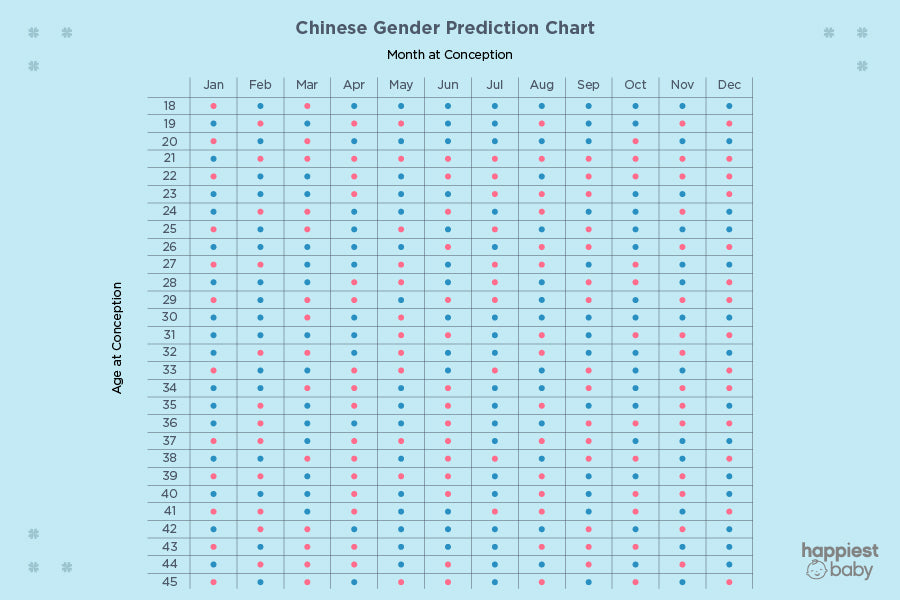Indian Method of Gender Prediction: Ancient Techniques Unveiled
Curious about the Indian method of gender prediction? This traditional approach has fascinated people for centuries, blending cultural beliefs with ancient practices to guess a baby’s gender before birth.
In India, gender prediction methods often rely on folklore, astrology, and unique customs. These methods are not based on medical science but are deeply rooted in tradition. Families and communities pass down these beliefs, often sharing them as fun and lighthearted ways to engage with expecting parents.
While these practices are not scientifically proven, they reflect India’s rich cultural heritage and the deep bond between tradition and family life. If you’re interested in learning about these intriguing methods, keep reading to explore their origins, techniques, and the role they play in modern times.
Ancient Practices In Gender Prediction
The cultural roots of gender beliefs in India are deep. Many families have long used ancient practices to guess a baby’s gender. Such practices are tied to myths and folklore. They are part of wedding and pregnancy rituals. People often share these beliefs at family gatherings.
These historical methods are not based on science. Yet they have stayed alive for centuries. Some use them just for fun. Others may take them seriously. It is important to respect all views. But remember, modern medicine gives us more accurate answers.
Astrology And Gender Prediction
Ancient Indian astrology includes methods believed to predict a baby’s gender based on planetary positions. These practices combine traditional beliefs and astrological charts, focusing on lunar cycles and birth timings. Though fascinating, such methods lack scientific backing and are viewed as cultural traditions rather than proven techniques.
Role Of Planetary Positions
Many believe that planetary positions influence gender prediction. According to Indian astrology, the alignment of planets during conception plays a role. The positions of Mars, Jupiter, and Venus are often studied. These planets are thought to hold clues about the baby’s gender. Some astrologers focus on the houses and signs linked to these planets.
Each planet is believed to carry specific gender energy. For example, Mars is linked to masculine traits, while Venus is linked to feminine traits. The analysis often includes the time and date of conception. This helps astrologers determine the planetary influence at that moment.
Birth Charts As Indicators
In Indian astrology, the birth chart is a key tool. It maps the planetary positions at the time of conception or birth. The fifth house in the chart is often studied for gender clues. This house is associated with children and their traits.
Astrologers also examine the lord of the fifth house. Its placement and aspects provide additional insights. Some use Nakshatras, or lunar constellations, to refine predictions. These ancient techniques are still popular in many parts of India.
Palmistry And Gender Signs
Ancient palmistry often focuses on lines and shapes on the hands. The Heart Line and Head Line offer clues. A deep and clear Heart Line is linked to feminine traits. Short or broken lines sometimes signal masculine energy. The Life Line shape can also provide gender insights. Curved lines may suggest nurturing qualities. Straight lines might point to strength or boldness.
The presence of triangles, squares, or islands on palms can be meaningful. Larger shapes are said to indicate masculine tendencies. Smaller or softer shapes often align with feminine characteristics. Each hand is unique, and interpretations vary widely.
Ancient palmists relied on patterns and symmetrydominant hand plays a key role in analysis. It shows active traits and decisions. The non-dominant hand reflects inherited qualities and potential. Observing the thumb shape can also help. A thick thumb may align with masculine energy. Thin thumbs often indicate feminine qualities.
Palmistry involves careful study of every detail. Experts analyze skin texture, finger length, and nail shape. These subtle features contribute to gender predictions. Methods vary across regions and traditions.
Diet And Gender Prediction Traditions
Indian traditions often include unique beliefs about predicting a baby’s gender based on the mother’s diet during pregnancy. Sweet cravings are linked to boys, while spicy food preferences suggest a girl. These methods, though unscientific, reflect cultural practices and curiosity surrounding pregnancy.
Food Influence On Gender Outcomes
Certain Indian traditions link food to gender prediction. Some believed eating spicy foods favored male births, while sweet foods were tied to female births. Women were advised to consume specific foods during pregnancy. For example, dairy products were thought to influence feminine energy, while protein-rich meals supported masculine energy.
Food choices were often based on beliefs, not science. Ancient practices also included fasting or eating specific grains. These ideas were passed through generations, shaping cultural habits. Though modern medicine disputes these, such traditions remain an important part of folklore.
Herbal Practices In Ancient India
Herbs played a vital role in gender prediction rituals. Ancient Indian healers used herbal remedies to balance body energies. Fenugreek and saffron were popular choices, believed to enhance pregnancy health. Some herbs were considered to increase chances of a specific gender.
Women were often given herbal teas or powders. These mixtures were made with natural ingredients like turmeric and ginger. The use of herbs varied across regions and communities. Such practices were rooted in cultural beliefs, not scientific evidence.
Rituals And Ceremonies For Prediction
Indian traditions include unique rituals for predicting a baby’s gender. These methods often rely on observations and beliefs passed down through generations. From food cravings to belly shape, families use cultural practices to guess the baby’s gender before birth.
Sacred Practices For Gender Clues
Indian traditions often include sacred rituals to predict a baby’s gender. Families may consult astrologers who calculate based on planetary positions. Some use ancient texts to find hidden meanings. Traditional pendulum tests are also popular in villages. A thread with a weight is swung over the mother’s hand. Movement patterns are believed to reveal clues about gender. Pregnant women may also participate in special prayers. These prayers invoke blessings and guidance from deities. Some practices rely on interpreting dreams for signs of a boy or girl.
Community Involvement In Rituals
Communities often gather to celebrate such rituals together. Elders play an important role in guiding these ceremonies. They share ancient knowledge passed down through generations. Women in the family often prepare special foods for the pregnant mother. These dishes are thought to influence the baby’s energy. Villagers may organize festive gatherings with music and dance. During these events, gender predictions are shared in fun ways. Everyone enjoys being part of the family’s journey.

Credit: thechampatree.in
Symbolism In Gender Prediction Methods
Indian traditions often connect specific colors with gender prediction. Red and yellow are commonly linked with baby girls, while blue or green are often tied to baby boys. Families use these colors in ceremonies or rituals to express their beliefs. Symbols like lotus flowers may represent femininity, while peacocks might symbolize masculinity. These associations vary between regions and communities.
Dreams hold special meaning in Indian gender prediction methods. Seeing a baby girl in a dream may hint at the birth of a girl. Dreaming of strong animals, such as tigers, is thought to predict a boy. Omens also play a role. For example, spotting a coconut falling upright might indicate a boy, while flowers blooming unexpectedly could signify a girl. These beliefs are deeply rooted in cultural traditions and folklore.
Modern Perspectives On Ancient Methods
Traditional gender prediction methods have been questioned by modern experts. Many of these practices are based on myths or local beliefs. Scientific studies show they lack reliable evidence. These methods often rely on patterns in behavior or physical changes. Some examples include belly shape or food cravings. Researchers argue these clues are not linked to the baby’s gender. They state that genetics and chromosomes decide gender, not external factors.
Despite this, many people still trust these age-old methods. Cultural roots make them hard to ignore. Scientists stress the need for awareness and education. This helps spread accurate knowledge about gender determination.
Ancient practices often hold deep cultural value. They are part of traditions passed down for generations. Many families still use them to feel connected to their roots. These methods create a sense of community and shared heritage.
Efforts are being made to preserve these traditions while promoting scientific understanding. Some believe in balancing modern science with cultural respect. This approach helps bridge gaps between old and new ideas. Celebrating traditions while ensuring accurate information can benefit everyone.

Credit: www.happiestbaby.com
Ethics And Beliefs In Gender Prediction
The ethics of predicting a baby’s gender stir up many debates. Cultural beliefs often guide these practices. Families may feel pressure to have a child of a certain gender. This pressure can shape how people act in society. It can also affect family dynamics.
Some people argue that guessing a baby’s gender is harmless fun. Others worry it can lead to serious ethical issues. It might cause unfair treatment of the child or the mother. It could also reinforce harmful gender stereotypes.
Beliefs about gender can deeply impact social norms. They often decide the roles men and women play in society. This can limit what both genders can do or achieve. It is vital to consider these points in discussions on gender prediction.

Credit: in.pinterest.com
Conclusion
The Indian method of gender prediction offers a fascinating cultural perspective. Many find it intriguing to explore age-old traditions for curiosity. While these methods are not scientifically proven, they remain popular. They reflect the rich heritage and beliefs of Indian culture.
It’s important to approach such practices with an open mind. Always remember, these methods are just for fun and not guaranteed. For accurate results, consult medical professionals when needed. Enjoy the journey of learning about different traditions and practices. It’s a beautiful way to connect with diverse cultures and their unique stories.






